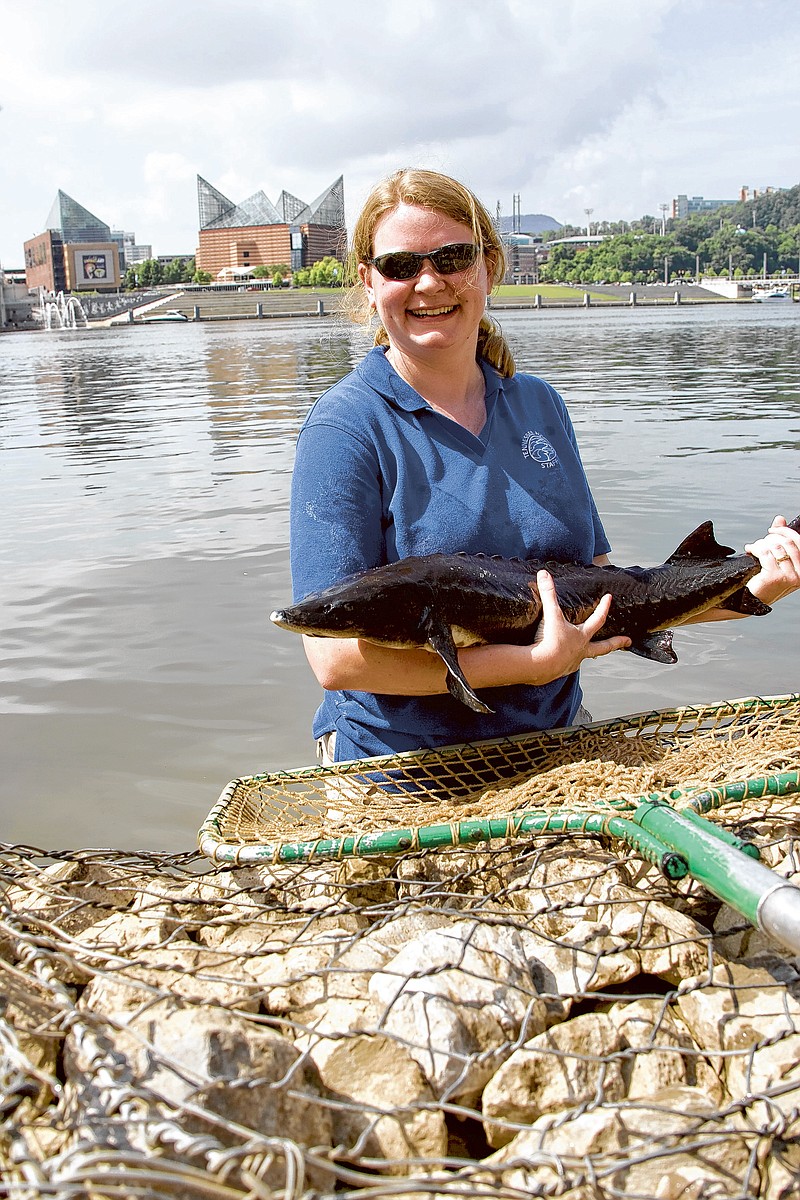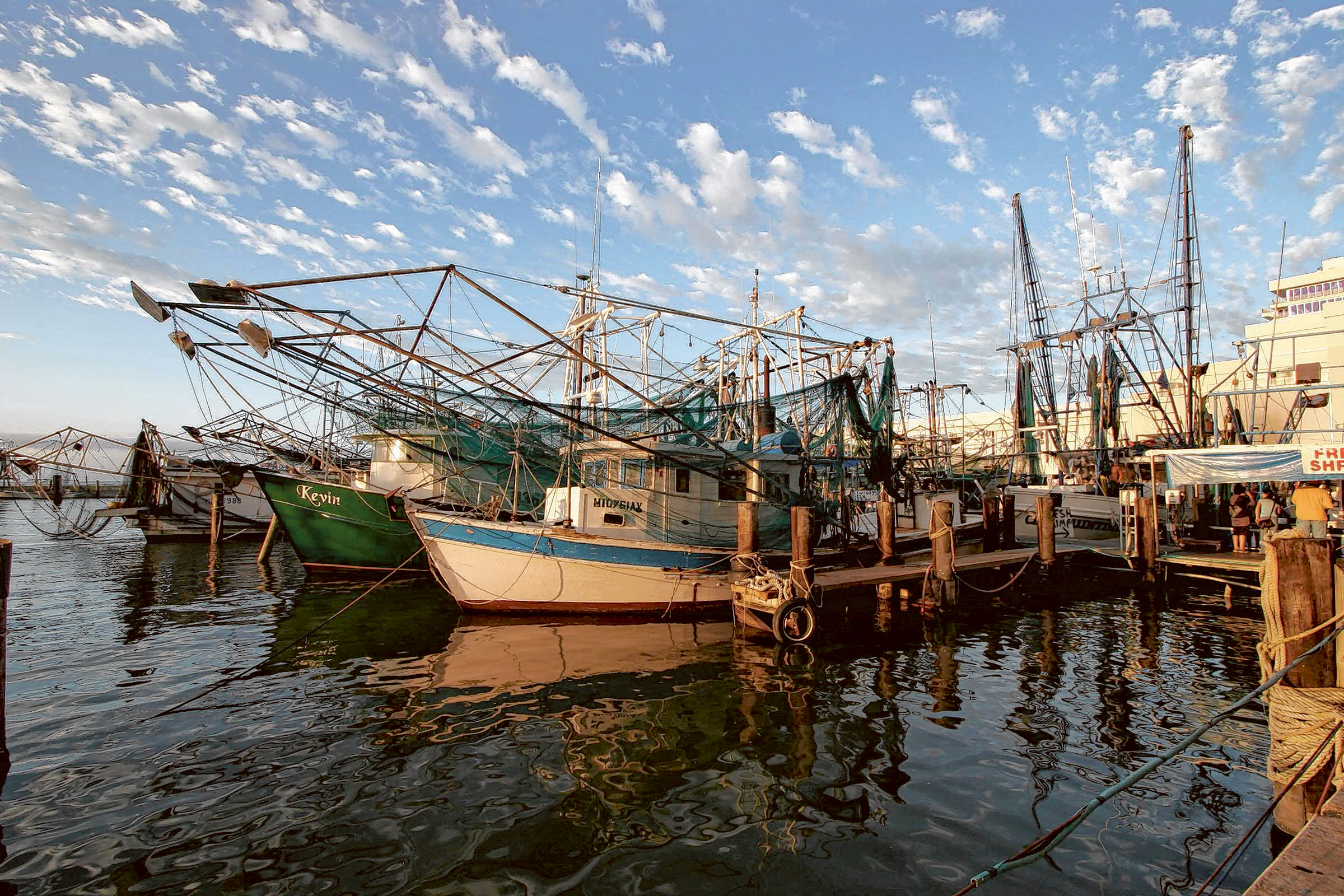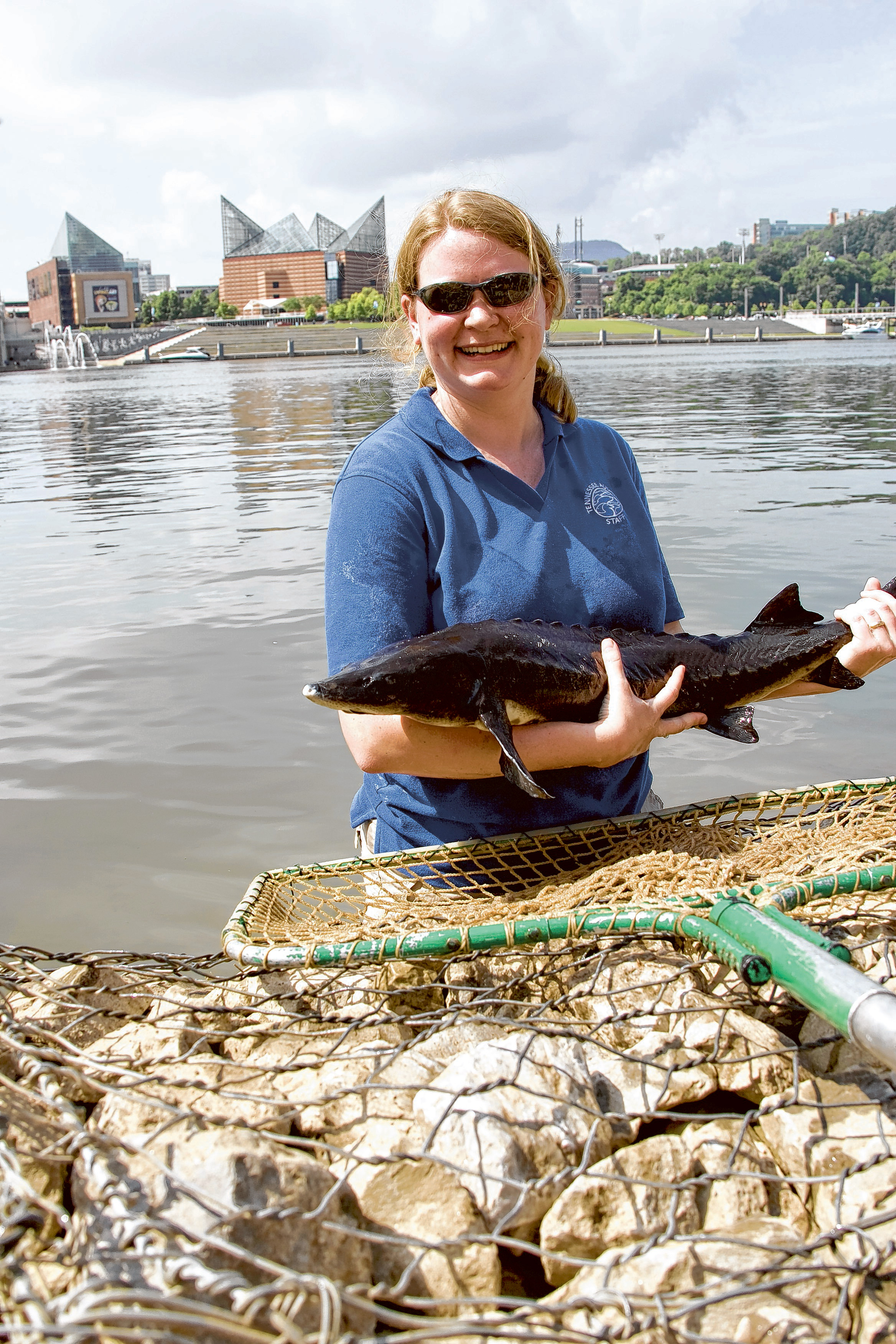As residents of a very, very landlocked city, Chattanoogans as a rule don't pay much attention to what's going on in the ocean unless there's a tropical storm headed toward our vacation destination. We don't hear much about human and environmental devastation on marine ecosystems, and we can be pretty unaware about seafood sustainability.
Serve & ProtectWhat: Tennessee Aquarium Serve & Protect ProgramWhen: September 19Live cooking show at noon and again in the evening at the IMAX Theater with host Tamie Cook and special celebrity chefs, followed by lunch and dinner prepared by local restaurant partners and featuring the species highlighted in the cooking show.Get more details and purchase tickets at: community.tnaqua.org/2013event
Maybe it's time for that to change.
The American interior and its inhabitants are more deeply connected to sea life and the fishing industry than most people think-a fact that the Tennessee Aquarium is aiming to promote as it approaches the third year of its Serve & Protect program.
"We're using it to start a conversation about seafood- where it comes from, how it's caught and the choices we can make to sustain it," says Dr. Anna George, director of the Tennessee Aquarium Conservation Institute. "Chattanooga's had a great movement started about local food, but since we're landlocked, seafood had been largely missing from that conversation."
One piece in the sustainable seafood puzzle involves an enormous dead zone in the Gulf of Mexico-a "biological desert" with low oxygen levels where sea life cannot survive.
The cause is an overflow of nutrients from agricultural runoff that makes its way down waterways like the Tennessee River before ending up in the Gulf. That means that agricultural practices in our state, hundreds of miles from the nearest coastline, affect the wellbeing of the ocean. "Tennessee is one of the top 10 states contributing to the dead zone based on pollution from agricultural runoff," says George.
High levels of rain anywhere within the Mississippi River watershed increase the amount of nutrient runoff, meaning that this summer's unusually high rainfall across the Southeast (including the weather system that ruined your Independence Day plans) could result in a dead zone of record size. "All this rain is definitely a factor," George says. "It's carrying a lot of runoff into the ocean. This year the dead zone could be seven times larger than the Great Smoky Mountains National Park."
In Next Month's Issue:
Find special recipes from local chefs using sustainable seafood recommended by the Serve & Protect program and learn more about the celebrity chefs who will be cooking live at the IMAX Theater during the 6311 E. Brainerd Rd Chattanooga September 19 event.
A dead zone this large could mean smaller Gulf fish populations than ever-which means supporting sustainable seafood efforts and businesses has a growing importance. "One of the biggest ways we impact the ocean here in Chattanooga is through eating seafood, but there's so many ways of catching it or raising it, and it's really confusing to consumers," says George. "But our choices have a really big impact on the health of the ocean."
We make one of these choices when we decide what kind of fish we're having for dinner.
"Worldwide, the biggest concern is that we're losing our big predatory fish- tuna, swordfish, Atlantic cod-so we're having to eat smaller and smaller fish," says George. "This is called fishing downthe food web. People are concerned that one day we're going to end up eating jellyfish.
We saw the Atlantic cod population completely crash in the '80s and we're still trying to come back from that, and we really don't want that to happen again. So instead of getting that big tuna steak, consider eating that farm-raised catfish-it's more sustainable and it's raised on a vegetarian diet."
But just as human and environmental factors impact the seafood supply, we even landlubbing Chattanoogans- are impacted right back: in this case, through the basic economic principle of supply and demand. When overfishing and low-oxygen water decrease fish populations, we pay the price in a very literal way. "What's going on in the Gulf affects us every day," says Erik Niel, chef and owner of Easy Bistro & Bar. "It can be a pretty dramatic swing-if oyster beds get shut down for just a few weeks, our prices go through the roof. Katrina, the oil spill, even tropical storms-they all have a huge impact." Niel says his restaurant gets a lot of its seafood from Gulf fisheries, and that the costs are already high due to transportation and labor costs even without these extra factors. "The difference comes in especially with Gulf shrimp. It's cheaper to buy Vietnamese shrimp than Gulf shrimp because of the economics of labor," he says. "We buy Gulf shrimp because they're the freshest. That's the tradeoff for someone like me in the restaurant industry-the domestic products are better, but more expensive."
But unless seafood sustainability awareness and actions change, restaurants and consumers might not even have that choice in the future. "The dead zone affects whether our shrimp are coming from the Gulf or are coming from Asia. It's going to impact the seafood that's available to us and to our kids," says George. "So whether our kids are able to grow up with the same seafood traditions as us depends on our practices today."
This is why seafood sustainability is so important to the Tennessee Aquarium, and why it's using the Serve & Protect program to educate Chattanooga about the issue. This year's program has a heavy focus on the Gulf region because of its importance in the Southeast's seafood industry and its economy.
"Protecting seafood for generations to come-I think that's what this boils down to," says Tamie Cook, an Atlanta based chef, freelance food writer and recipe developer who has been involved with Serve & Protect since its inception.
"The important issues are ensuring that there is an industry for fishing in the United States, but also having a healthy source of water not only for drinking but for sea life."
Cook says that there are several ways the average person can support sustainable seafood efforts, and that first and foremost is to do your research. Find out how the seafood at your grocery store and favorite restaurants is caught-hook-and-line fisheries are much better for the environment than trawls, which can scoop up and kill nontargeted species. "Use resources like the Tennessee Aquarium's list of highlighted species or the Monterey Aquarium's pocket guide to sustainable seafood, and start purchasing those fish at your grocery store," says Cook. "If they don't have it, ask for it. Lots of times, stores will start carrying a product if they know people want it."
Another way consumers can do their part helps both sustainability efforts and the fishing industry: buy U.S. seafood, which is subject to stricter regulations. "I firmly believe that eating Gulf seafood puts more money into the hands of Gulf fishermen, which gives them more power to make positive changes in the industry," says George.
"Another thing we can do is to eat local produce-get to know farmers, their methods, for example, whether they plant trees by the creek to reduce fertilizer runoff. The tradeoff is that we have to be willing to pay a bit more, because these farmers aren't using every square inch of land for produce."
Chef Niel agrees. "I want the generations down the road to be able to enjoy the things we have, and generally that means paying more now," he says. But more than anything, Serve & Protect simply wants Chattanooga residents to be more aware of seafood sustainability, because our actions have consequences that reach far into the ocean and into the future. "People should care because we want our kids to have these same experiences that we enjoy, whether it's going to the beach or grandma's cooking," says George. "So we have to make choices that will enable these species to endure."


